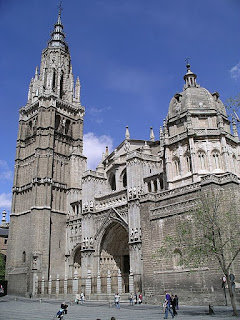Abū al-ʿAbbās Aḥmad ibn Muḥammad ibn Kathīr al-Farghānī (c.800 - 870) was known as Alfraganus in Western Europe (see illustration, from a 1493 astronomical work). He was described as Arab and as Persian; there is a suggestion that his name comes from being born in Farghana in Uzbekistan.
His best-known work was Kitāb fī Jawāmiʿ ʿIlm al-Nujūm (Elements of astronomy on the celestial motions), a summary of Ptolemey's astronomical Almagest with revised calculations. He concentrated less on the mathematics and more on explaining the concepts in ways that were easy to understand. This work reached the West in translations by John of Seville and Gerard of Cremona. Dante's knowledge of astronomy came from al-Farghani.
One of his first recorded acts is being involved in a team that calculated the diameter of the Earth. This work influenced Columbus in his voyage across the Atlantic. Columbus, however, misunderstood the translation of al-Farghani's use of "mile." Columbus assumed al-Farghani was using the 4856-foot Roman mile; actually, al-Farghani used the 7091-foot Arabic mile. Columbus thought the diameter of the Earth was smaller.
In Cairo, al-Farghani wrote a treatise on the astrolabe earlier than al-Ashraf Umar II and Abd al-Rahman al-Sufi. Also while in Cairo he supervised the New Nilometer. The Nilometer, as you might guess, was designed to measure the height and clarity of the water of the Nile River.
The annual flooding of the Nile was crucial to Egypt's agricultural cycle, but it was unpredictable. Too heavy a flood was destructive; too light could lead to famine. Knowing what was coming was important. Nilometers come in different designs, but the simplest was a vertical column submerged in the river with markings to denote height of the water. Later, more elaborate versions involved shafts with steps that led down. Noting the height and comparing it to previous years helped predict whether the crops would be successful.
Speaking of flooding...next I want to tell you about a flood that killed thousands in more than one country. See you tomorrow.

